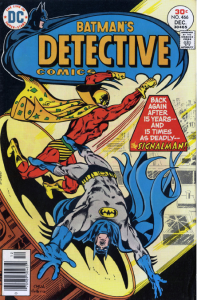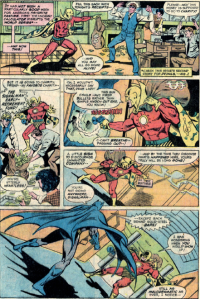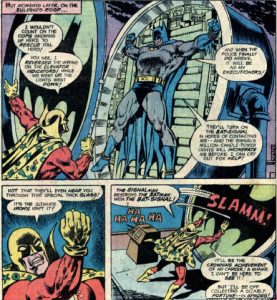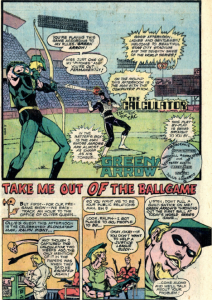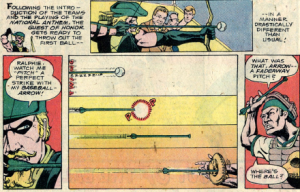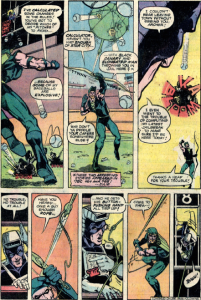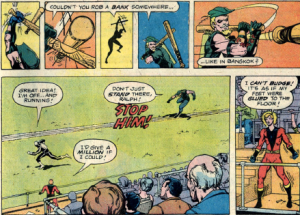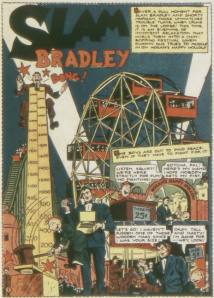Detective 466 – The Signalman returns, and the Calculator vs Green Arrow
After spending years in prison, Phil Cobb escapes and returns to his original villainous identity, the Signalman, in Detective 466 (Dec. 76). In his last appearance, in the early 60s, he had adopted a second identity, the Blue Bowman.
Len Wein, Ernie Chan and Vince Coletta handle this tale, and the Signalman comes off as fairly impressive. His signals are used in a variety of ways, inspiring both the crimes and his weapons and defenses.
And you just have to love the scene in which he tries to fry Batman in the Bat-Signal. 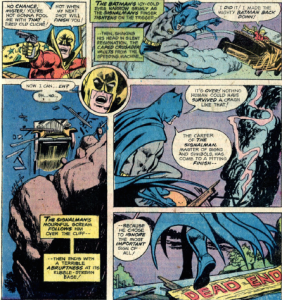
He goes over a cliff at the end, but does not die, returning next year in the pages of Batman. Signalman would have a role in a very good Justice League story in the 80s, but for solo outings, this was his highpoint.
Green Arrow gets a story in Detective Comics for the first time, as he faces the Calculator in this Bob Rozakis/Marshall Rogers/Terry Austin story.
Still in Star City, the Calculator’s plan this time is to steal the baseball game. He steals the ball being shot by Green Arrow as the first pitch, and all other balls thrown vanish as well.
This is also the first Rogers/Austin story in Detective. The art is just perfect.
Ralph Dibny had been visiting with Green Arrow before the attack, but finds himself incapable of going into action as the Elongated Man against the Calculator. Green Arrow writes it off as nerves, but it’s the major clue as to the Calculator’s greater scheme.

